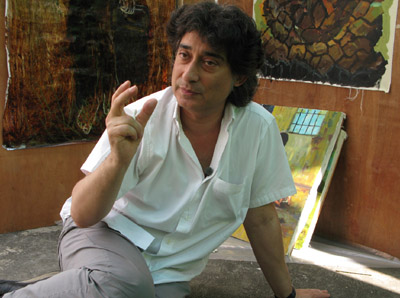
As a psychiatrist, you have worked with Cambodian refugees for more than 20 years. How did you come to think about the genocidal intentions of the Khmer Rouge?
The vital lead of my work was this impression, with the passing consultations, that patients were stuck in Cambodia between 1975 and 1979, when they were talking to me. They were talking about themselves and about their lost loved ones.
These dead were an intrusive presence, whether in the guise of ghosts or whether in the guise of people they were looking for. The patients were literally polluted by the deaths. In the case of these refugees, people did not speak about the life of their dead but only about their death.
There was another paradox: It was to hear them saying, « Pol Pot, it’s over, we do not want to talk about it ». It was a forbidden subject in the community while in consultations they only talked about that. If I wanted to understand, I had to understand what happened in the mind of the Khmer Rouge. I had to understand their intention.
Why did you define this intention as a genocidal intention?
Through the stories of the survivors, we detect that something aims to take out the human being from its human condition.
In the Cambodia of the Khmer Rouge, the dead are not used as a threat but as an identity with the living. Why did the Khmer Rouge hide the dead? Because erasing the traces of the dead – the corpses – amounted to melding the living and the dead.
Before the Khmer Rouge regime, ancestor worship was powerful and death was a very ritualised space. Under Pol Pot, this space exploded. It was a deep deterioration of a foundation of the culture.
Yet Cambodians who talk about their lives during this period say they felt death as a threat.
When you think, « It will happen to me », this is not a threat anymore. This is a destiny. You are in a hostile universe where you can’t trust anyone and where death is not exhibited.
The Khmer Rouge did not work on the opposition of dead to living, which terrorises the living, but on the confusion in space and time. In the rice fields, disappearance is used to kill the population. It is not a matter of disappearance of close relations since the families had been separated. It is the disappearance of the others. And the dead are everywhere.
The concealment of the traces boils down to saying that they were nothing, which comes down to denying their existence. The dead have no place to rest. This is called a dehumanisation process, and therefore, a genocidal process.
Apart from the imposed confusion between the dead and the living, what convinced you that it was a genocide ?
The first thing is the creation of categories, which are far from something natural or empirical. Those who were not on the Khmer Rouge side before 1975 were categorized as New People – a new category, impermeable, equal to an ethnic category.
Going from the Ancient People to the New People was possible, but not the opposite. The Khmer Rouge thought up a radical otherness. The intellectuals who were asked to serve the country were executed. There were criteria for each category through language, the wearing of glasses, educational background.
The second point is related to the separation of families. The social links were dismantled, the human beings subjected to an invisible order, to a virtual threat. The descendants do not exist anymore, the genealogy is destroyed.
The Khmer Rouge arranged things so that Cambodians had no history, neither before nor after. For me, as an anthropologist, it is a genocide.
What is the role of the ECCC judges?
To make the perpetrators speak. Their work is to study the facts, to interview the defendants, to establish the responsibilities and to judge them.
We don’t ask them to write history, we just ask them to do their job.
Are the perpetrators ordinary people ?
The more a man is dislocated, the less reserved a perpetrator will be to act. No need to be a monster, a bastard or a pervert.
Being a minor official who is doing his work is sufficient. So yes, the perpetrator is an ordinary man, deeply human, and that’s the reason why he is sentenced. He is sentenced because when he should have said, « I won’t do it », he did not say it. Every subject has to pay the price of his choices.
Under the Khmer Rouge, these choices may have been difficult but it is not true that there was no choice.
Many former Khmer Rouge say that they executed orders because they would otherwise have been killed.
Death is a choice as well. Why did they consider their individual lives to be more important than the lives of the hundreds or thousands of people they killed? They have to pay the price for this choice.
Published in the Phnom Penh Post, Monday 16 March 2009